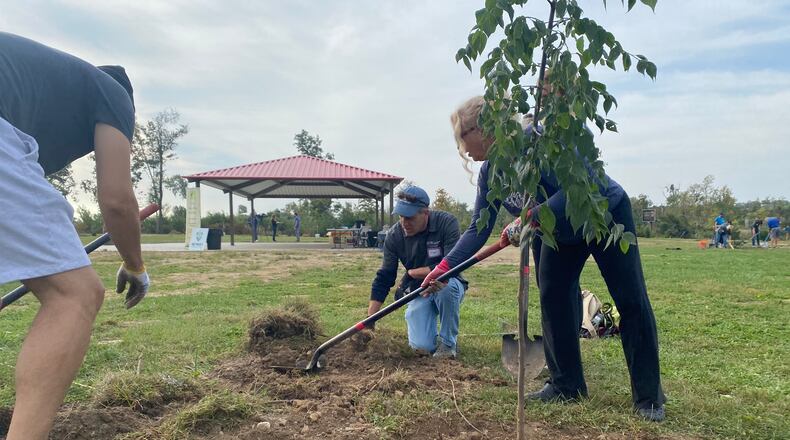Some of the trees destroyed in the tornado were more than 200 years old and had grown more than 60 inches in diameter, the township said.
The UPS Foundation, Dayton Rotary Club, Leadership Dayton and Keep America Beautiful donated an estimated total of more than $30,000 to plant the 81 trees and keep them healthy long-term.
Grady McGahan, director of RETREET, a program of Keep America Beautiful who is working with Harrison Twp. on the project, said after a disaster, trees can be some of the hardest parts of a community to reestablish because it takes them so long to grow.
“You can rebuild the houses and replace the cars and repave the roads and rebuild everything that’s in the human-built environment, but what you can’t have back are large trees,” McGahan said. “That’s a lifetime worth of growth that has to occur for that to happen.”
He said people will also notice how quiet neighborhoods are after a disaster, because birds and squirrels that used to live there lost their habitats.
RETREET is also planning the Miami Valley TREEcovery Campaign, which would plant 1,000 trees in the next two years, McGahan said. Volunteers and donations are needed and can sign up at https://www.retreet.org/mvtc
On Saturday, volunteers from all over the Dayton area helped to plant the trees to reestablish the canopy at the 13-acre park and put fencing around the trees. RETREET also planted 10 trees at peoples’ home in the neighborhood nearby.
Georgeann Godsey, a Harrison Township trustee, said Saturday was a way to invite the public to see the work that had already been done on the park. She said she hopes the park can become a space for children to play, but also a place for seniors to come.
“It is the beginning of rebuilding the community part of it,” she said.
Merle Cyphers, services director for Harrison Twp., said the shelters at the park had already been rebuilt. The township plans to open the park to the public on April 1, 2022, he said.
Cyphers said it was “very significant” to be planting the trees.
“Cleanup is one thing and it’s labor intensive and it’s hard,” he said. “When you start to get to the point where you’re putting trees back you’re actually, not just figuratively, you’re literally bringing the park back to life.”
About the Author




